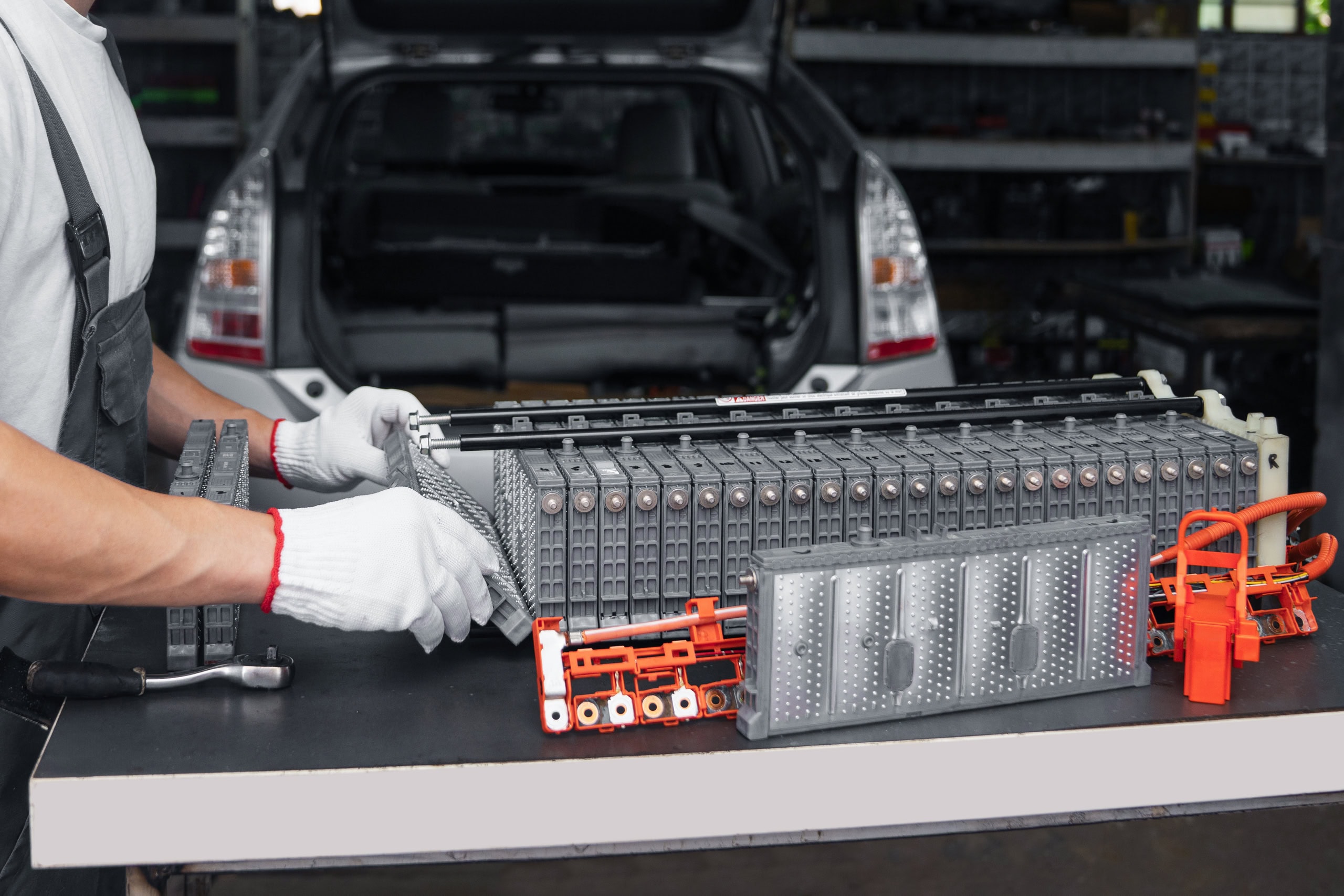In conversation with GreenTech Industries (GTI)
Welcome to our new series where the Cross-sector Battery Systems Innovation Network talks to experts to explore challenges and innovations shaping battery technologies across both automotive and non-automotive markets. In this article, we look at how EV battery remanufacturing extends battery life, reduces waste, and creates value in the circular economy.

As the electric vehicle (EV) market grows with a focus on consumer adoption, so does the challenge of keeping batteries performing at their best for as long as possible. Unlike internal combustion engine (ICE) vehicles, that can retain their value for a long time and where repair pathways are well established, EV batteries depreciate more rapidly, linked to consumer concerns over costly battery replacements.
We spoke to GreenTech Industries, an SME based in Southam, who are taking EV battery packs at end-of-life and repurposing the materials and component into second life applications. In this article, we explore EV battery remanufacturing, why it matters, and the role it plays in maintaining performance and extending battery life.
What is remanufacturing?
While an ICE can often be rebuilt to perfect condition, EV batteries are different. From the moment a battery is in use, it undergoes irreversible chemical changes. Over time, this leads to gradual performance decline. Remanufacturing is the process of restoring a used part to a like-new condition that meets original equipment manufacturer (OEM) standards
From your perspective, why is remanufacturing important for UK businesses to turn this challenge into a competitive advantage?
The SMMT have estimated that by 2030, the UK alone will have 28,000 tonnes of batteries requiring recycling. By 2040, that volume will rise to 235,000 tonnes. However, those forecasts only account for batteries retiring at the end of their expected vehicle life. They don’t include the growing number of premature battery failures, or the significant share of Category S and Category N write-offs (vehicles written off due to structural or non-structural damage). That additional volume could make the challenge and opportunity far larger than current models predict.
Where does remanufacturing fit within the circular EV economy, and what gap are you trying to fill?
When we talk about electrification, there’s plenty of focus on recycling and ‘black mass’ recovery, and growing interest in second-life applications. But there’s a missing step in the middle which is remanufacturing. In traditional ICE vehicles, there’s a whole infrastructure around remanufacturing: failed engines are collected, rebuilt and revalidated by OEMs, then reintroduced into the warranty fleet. That system doesn’t yet exist for EVs. There’s no OEM-level, graded remanufacturing strategy for batteries or electric powertrains. We’re working in that gap – we accept end-of-life EV battery packs and zero emission powertrain components (batteries, motors, inverters, DC-DC converters, etc.) to recover viable components before they’re shredded or smelted, validating them for continued use, and finding new markets where they can deliver value.
The landscape across the UK:
The UK Government’s Battery Strategy explicitly mentions regulation to support reuse, repurposing, and domestic recycling infrastructure; and working with the supply chain to adopt certification schemes and reuse standards.
The RECOVAS project which concluded in 2025 was set up in 2020 to create the world’s first industrial-scale supply chain for end-of-life EV batteries. RECOVAS is a partnership between EMR, three major vehicle manufacturers; Bentley Motors, BMW and Jaguar Land Rover, the University of Warwick, the Health and Safety Executive, the UK Battery Industrialisation Centre, Autocraft Solutions Group, Connected Energy (who repurpose electric car batteries). This nationwide pilot had the aim to support electric vehicle manufacturers to develop simple design changes that greatly improve the potential to remanufacture, reuse or recycle their batteries at end-of-life. Similarly, research at WMG, Faraday Institution, and University of Birmingham’s ReLiB project is building the technical and policy frameworks needed to enable a fully circular battery economy.
What kinds of applications can repurposed EV components serve beyond the automotive sector?
Once you open a battery pack, you realise how many parts have value, contactors, fuses, cabling, structural components. Many are standardised across high-voltage systems and can be used in rail, construction, or energy sectors. For example, a cell with some degradation might not be ideal for a vehicle anymore, but in a stationary energy storage system or solar setup, it can outperform the ‘new’ cells currently used there. We’re currently developing products like portable energy units, mobility batteries, even small-scale generator replacements using recovered components.
What are the main barriers to scaling remanufacturing in the UK?
Because much of our incoming material is technically from a waste stream, there are regulatory and permitting hurdles. For an SME to get the correct permits for handling and repurposing EV powertrain components, it can take a year or more. We see skills and knowledge gaps such as in breaker yards who often lack staff trained in high voltage systems. There’s a risk of valuable parts being destroyed or discarded simply because the handlers do not have the knowledge or tools. From a consumer perspective, for remanufactured components to have market trust (especially in safety-critical or regulated applications), we need certification and validation from OEMs, and graded remanufacturing standards. And lastly, based on the volumes of EV batteries mentioned above, to process a meaningful share of the end-of-life battery flow (our ambition 10% by 2030), we need more factory-scale innovation in diagnostic, grading, refurbishment, logistics, and repurposing technologies.
Closing thoughts
As the UK moves deeper into the electric transition, remanufacturing is emerging as a vital link in the circular economy; extending the life of components, reducing waste, and improving the perception of EV value and sustainability. Progress is being made, but the challenge now is scale, developing consistent standards, streamlining regulation, and fostering collaboration across the supply chain.
At Innovate UK Business Connect, we continue to support the growth of this ecosystem by connecting innovators, partners, and expertise across the UK battery value chain.
Related programme

Cross-Sector Battery Systems Innovation Network
The Cross-Sector Battery Systems Innovation Network, funded by Innovate UK, is a cross-sectoral and collaborative community of technology developers and end-users.

